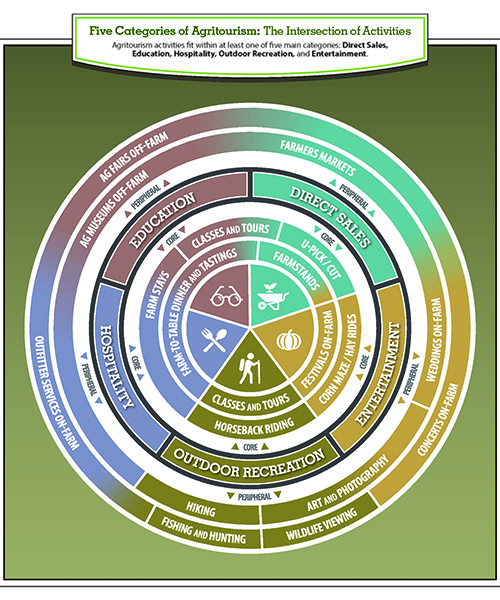Agritourism Survey
The Multi-state Study of Success Factors for Farms with Direct Sales and Agritourism was funded for three years by the USDA National Institute of Food and Agriculture (NIFA) Agriculture and Food Research Initiative (AFRI) Critical Agricultural Research and Extension (CARE) program.
Research-based Fact Sheets
- Educational Support for Agritourism (2024; PDF)
- Growing a Global Agritourism Network (2024; PDF)
- Agritourism in Vermont 2020 (PDF)
Journal Articles (Open Access)
- Chase, L.C., M. Stewart, B. Schilling, R. Smith, and M. Walk. 2018. Agritourism: A Conceptual Framework for Industry Analysis. Journal of Agriculture, Food Systems and Community Development 8(1):13–19
- Chase, L.C., B. Amsden, and D. Kuehn. 2013. Measuring quality of life: A case study of agritourism in the Northeast. Journal of Extension 51(1)
Literature Review
Census of Agriculture
This is the most up-to-date Census.

